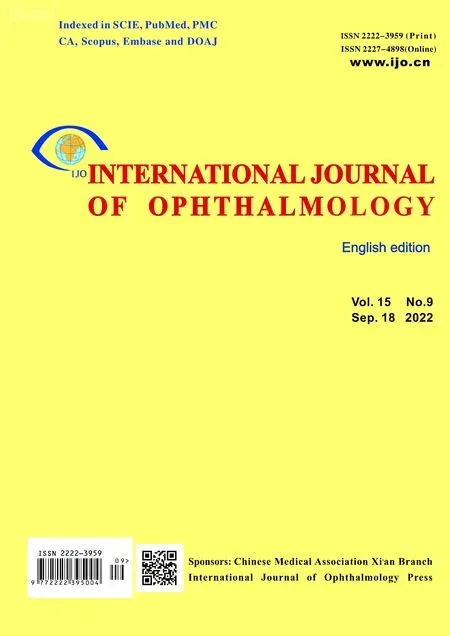Interferon-gamma release assays in tuberculous uveitis:a comprehensive review
2022-09-14UsaneeTungsattayathitthanSutasineeBoonsoponNattapornTesavibulTararajDharakulPitipolChoopong
INTRODUCTION
T uberculosis (TB) is an infection caused by(). The global TB report 2020 revealed that a quarter of the world’s population was infected withand the incidence rate for developing the disease was 30 000 people per day. It was reportedly one of the top ten causes of death, responsible for 1.4 million fatalities worldwide in 2019. Currently, active TB and latent tuberculosis infection(LTBI) are believed to constitute a comprehensive spectrum rather than being considered as separate stages of the infection.World Health Organization guidelines define LTBI as a state of persistent immune response stimulated byantigens without evidence of clinical manifestations of active TB.LTBI has several stages that affect individuals who could be asymptomatic; they may experience a controlled infection with nonreplicating but viable organisms. LTBI is therefore considered an important reservoir of TB infection that can subsequently develop into an active disease.
UWB脉冲源经发射天线发射无载频单极冲激脉冲信号,接收机通过接收天线将目标回波信号送至取样变换电路,经时域变换取样得到回波信号。通过对回波信号的处理分析来提取目标的距离方位信息。IR-UWB穿墙雷达回波信号处理流程如图2所示,输入数据为采样得到的回波信号x[m,n]。首先对回波数据进行脉冲积累,由于穿墙探测中信号经过墙体的双程穿透衰减,得到的目标信息较为微弱,需要对脉冲积累后的数据作降噪处理,进一步提高信噪比,最后输出降噪处理后的信号。
Besides lungs, TB can affect multiple organs throughout the body, including the eyes. Ocular TB is an extrapulmonary infection that may involve any part of the ocular tissue and may occur without a history of pulmonary TB. Tuberculous uveitis (TBU) is one of the most common clinical presentations of ocular TB. The prevalence of TBU varies according to geography. While endemic areas, including India and Saudi Arabia reported a high prevalence of 5.6%-26.2%, nonendemic countries, such as the United States, Europe, and Japan, showed a lower prevalence of 0.2%-7%.
Considering the immune-related pathogenesis of TBU,immunological tests can be useful for its diagnosis. The tuberculin skin test (TST) and interferon-gamma release assays (IGRAs) are well-known immunological tests. Poor specificity of the TST for diagnosing TB in those who had been vaccinated with Bacillus Calmette-Guerin (BCG)and in residents of endemic regions, led to the subsequent development of IGRAs that enabled immunodiagnosis of LTBI. These assays performed along with or without the TST, are now increasingly used to diagnose TBU.
In this narrative review, we provide a brief description of the clinical characteristics of TBU. We further comparatively review the principles of IGRAs, including diagnostic accuracy,advantages and disadvantages, interpretation, and clinical application in adults with suspected TBU.
Some experts suggest performing TST or IGRAs for all patients with idiopathic uveitis, whereas others recommend testing patients with either suspected signs of TBU or with additional risks for TB, including birth outside the US,history of living in an endemic area, history of incarceration or homelessness, history of intravenous drug abuse, HIV positive status, failure to respond to oral corticosteroid or immunosuppressive therapy, or presence of granulomatous inflammation on presentation.
通用电气公司在人力资源管理中坚持以人为本的指导思想,高度重视人才的选拔和培养。公司人力资源管理的使命是培养企业家和企业领袖。“十年树木,百年树人”,如果用一棵大树来比喻通用电气公司的人力资源管理,那么可以将其概括为“苗优土肥、根深干粗、叶茂果硕”的树型培养模式。
Both ESAT-6 and CFP-10 have multiple epitopes for T lymphocytes and can, therefore, generate an intense reaction. The two remaining wells act as controls for internal test validation.The positive control well contains phytohemagglutinin(mitogen) for stimulating nonspecific T-cell response, whereas no antigen is added in the negative control (nil) well. The production of IFN-γ is then detecteda sandwich capture technique by conjugation with secondary antibodies revealing a “spot”. These spots, considered “footprints” of effector T-cells producing IFN-γ, are then enumerated.
Generally,may not be isolated from the ocular tissue in all TBU patients. Ocular TB may be classified as such, based on an affected patient’s clinical findings meeting diagnostic criteria or a clinical definition. Figueiraproposed that investigations for TB should be performed in any of the following situations: 1) Uveitis of unknown etiology, either recurrent or unresponsive to conventional therapy; 2) Ocular findings highly suggestive of ocular TB; 3) Before initiating immunosuppressive therapy, particularly that with biologic agents.
CD4 T lymphocytes were believed to play a significant role in the immune response to TB until recent studies provided evidence to support the additive role played by CD8 T lymphocytes. RD-1-specific CD8 Tlymphocytes are also more frequently detected in recent or active TB infections than in LTBI. These findings led to the development of the fourth generation of IGRAs, QFT-Plus. This test package contains two tubes with TB-specific antigens, TB1 and TB2.The TB1 tube containing long peptides derived from ESAT-6 and CFP-10, was designed to induce a specific CD4 T-cell response. The TB2 tube also contains the same long peptides as TB1 along with shorter peptides that can stimulate the CD8 T-cell response. The ability to elicit both CD4 and CD8 T-cell responses is believed to improve the sensitivity of this generation of IGRAs.
取已知含量的药材样品(编号:11)细粉适量,每份0.1 g,共6份,分别加入一定质量浓度的单一对照品溶液各适量,按“2.2.2”项下方法制备供试品溶液,再按“2.1”项下试验条件进样测定,记录离子信号强度并计算加样回收率,结果见表5。
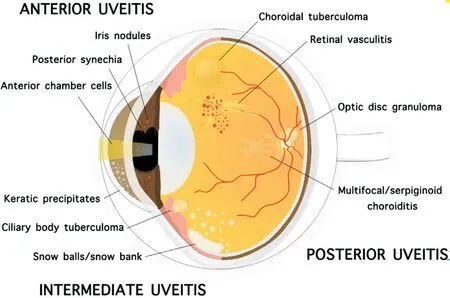
A definitive diagnosis of TBU requires isolation offrom intraocular tissue specimens obtained through invasive procedures such as aqueous paracentesis, vitreous aspiration,or retinal biopsy.culture remains the gold standard for a definitive diagnosis of ocular TB. Other methods include detection of acid-fast bacilli on smear examination,amplification ofnucleic acids, and histopathological examination of ocular tissues. However, there are limitations in identifying the organism in the eye. Usually,only a limited amount of ocular tissue sample can be extracted,and associated procedural complications may potentially damage vision. The Collaborative Ocular Tuberculosis Study showed that patients with presumed TBU demonstrated low positive yield offrom intraocular fluid samples on polymerase chain reaction. Given the limitations of ocular sampling and associated low positivity yield, TBU was rarely diagnosed using this method. This may contribute to delays in diagnosis and treatment, resulting in poor visual outcomes.Consequently, a finding of uveitis with intraocular features characteristic of TBU in conjunction with positive results of indirect tests, is considered sufficient evidence for a diagnosis.Two indirect investigations, including the TST and IGRAs,evaluate the intensity of the host immunological reaction to TB antigens, which may manifest as a T lymphocyte-mediated immune response or as a delayed hypersensitivity reaction.The TST is antest performed using a purified protein derivative consisting of >200 protein precipitates derived from a heat-inactivated. The diagnostic feature of a positive TST is the development of skin induration, interpreted within 48-72h after an intradermal injection of the purified protein derivative. The American Thoracic Society and Centers for Disease Control and Prevention have provided guidelines for the interpretation of positive TST findings, as shown in Table 1.Notably, a technique that helped identify different mycobacterial antigens, including early secretory antigenic target-6 (ESAT-6) and culture filtrate protein-10 (CFP-10), was developed into a test for blood-basedevaluation of the immune response to TB. In the absence of cross-reactivity due to prior BCGvaccination, measurement of interferon-gamma (IFN-γ)produced by T lymphocytes in response to these antigens,forms the basis of IGRAs performed for the diagnosis of TB.
现如今的小学生,虽然在心智与身体都处在发育阶段,但是很多小学生都有着很强的自我意识,在组织集体活动或是展开课堂管理时,常常会出现叛逆的情绪。老师常常面临着来自学校管理和课堂管理能力不够的双重压力,在如此状况下,老师和学生很难实现友好互动,矛盾甚至会突然激发。导致师生关系恶化,极大的阻碍了班级管理工作的正常展开。
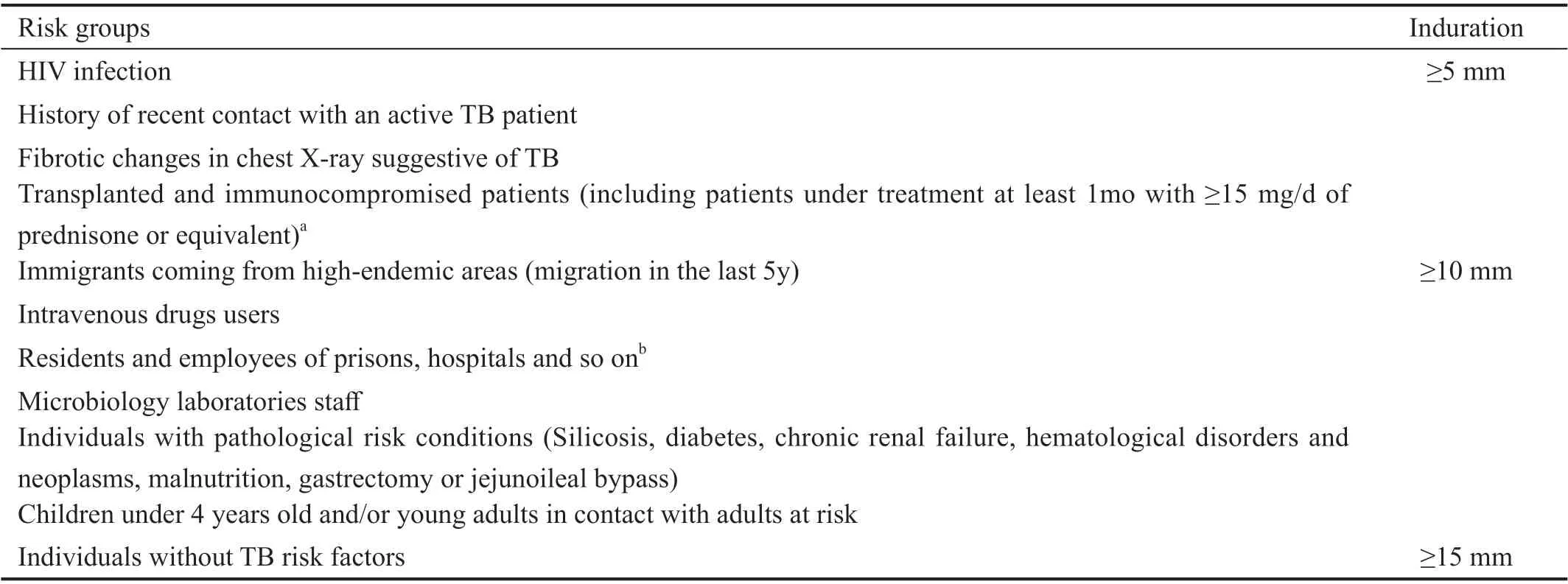
IGRAs areimmunodiagnostic tests that use antigens to stimulate specific T lymphocyte responses to. Once specific T-cells are stimulated, they activate an immune response by releasing cytokines, including IFN-γ.IFN-γ is a crucial cytokine of the CD4 T helper 1 (Th1)subset and is responsible for the delayed hypersensitivity immune response.T-cell responses can be evaluated by estimating either the number of IFN-γ producing T-cells or by measuring IFN-γ production using an enzyme-linked immune absorbent spot assay (ELISpot) and an enzymelinked immunosorbent assay (ELISA), respectively. The United States Food and Drug Administration has approved commercial IGRAs as indirect and adjunct tests for identifying TB, to be performed in conjunction with risk assessment,radiography and other medical and diagnostic evaluations.
The ELISpot technique was used for the T-SPOT. TB test(Oxford Immunotec, Abingdon, United Kingdom) facilitates the enumeration of peripheral blood mononuclear cells that produce IFN-γ after stimulation with-specific antigens.Peripheral blood mononuclear cells are added into 4 separated 2-microtiter wells coated with monoclonal antibodies to IFN-γ. The first two wells are each filled with either of the two different antigens, ESAT-6 and CFP-10, which are peptide antigens located in the region of difference-1 (RD-1) of thegenome but are not found in the BCG vaccine strains and most strains of non-tuberculous mycobacteria, except for,,, and.Likewise, there is a report of cross-reactivity between antigens ofand.
Another adding antigen other than ESAT-6, CFP-10, and TB 7.7 used for LIOFeron TB/LTBI is alanine dehydrogenase,which can induce CD8 T-cell response. This antigen is not found in BCG and is reportedly involved in the adaptation ofto an anaerobic dormant stage observed in LTBI. Like the QFT-Plus, LIOFeron TB/LTBI test includes four tubes (positive control, negative control, and two antigen-coated tubes). The first antigen tube, TB-A, contains long peptides of ESAT-6,CFP-10, and TB7.7. However, the second antigen tube called TB-B is coated only with highly purified recombinant alanine dehydrogenase, a different antigen from that used in QFT-Plus.No other antigens or peptides are included in the TB-B tube.Besides IFN-γ, several markers such as interleukin (IL)-2,IFN-γ-inducible protein of 10 kDa (IP-10), IL-5, and IL-10 have been investigated to improve diagnostic performance and discrimination of TB status. These biomarkers are beyond our scope; thus, they are not included in this review.
Guptasuggested that the presence of cellular infiltrate either in the anterior chamber or in the vitreous along with broad posterior synechiae, retinal perivasculitis with or without discrete choroiditis/scars, multifocal serpiginoid choroiditis, choroidal granuloma (single or multifocal), optic disc granuloma, and optic neuropathy were ophthalmic signs consistent with a diagnosis of ocular TB. Affected patients in endemic areas often present with broad-based posterior synechiae, retinal vasculitis, choroiditis, and serpiginoid choroiditis findings that are highly specific to TBU. Studies from nonendemic areas demonstrated occlusive retinal vasculitis and serpiginoid choroiditis as more common clinical presentations of TBU. Figure 1 illustrates clinical characteristics of TBU.
An interpretation of T-SPOT. TB test is based on the enumeration of spot-forming units. A test result is considered positive if a spot count induced by either antigen ≥6 spots after subtracting the spots from the negative control well. A negative result is indicated if ≤5 spots are induced by both antigens after subtracting the spots from the negative control well. An“indeterminate” result refers to >10 spots in the negative control well, or when the positive control well shows <20 spots unless either of the antigen well shows a positive result.This suggests that another sample should be collected and repeatedly tested. If the spot counts from the antigen wells minus the negative control well are equal to or near the cutoff value (5, 6, or 7 spots), these results may be considered as“borderline” or “equivocal”, leading to less reliable results and warranting a repeat test with another sample. Therefore, in the United States, different cut-off values for positive and negative results are indicated by ≥8 spot counts and ≤4 spot counts,respectively.

The ELISA technique has been commercially developed through many generations, which include QuantiFERON (QFT),QuantiFERON-TB Gold (QFT-G), QuantiFERON-TB Gold in-tube (QFT-GIT), and QuantiFERON-TB Gold Plus (QFTPlus). Initially, purified protein derivative was used as the antigen in the QFT test. Then, TB-specific antigens, ESAT-6 and CFP-10, were representatively used in subsequent versions named QFT-G. The third-generation test, QFT-GIT, includes three tubes, the TB antigen-coated tube, the positive control(mitogen) tube, and the negative (nil) control tube. TB antigencoated tube contains ESAT-6, CFP-10, and an additional peptide antigen TB7.7.
It should be noted that most patients with ocular TB have no history of pulmonary or other systemic TB infections.An absence of pulmonary TB; therefore, does not exclude the possibility of ocular TB. Up to 60% of patients with extrapulmonary TB do not have evidence of pulmonary disease, and chest X-rays are normal in those with LTBI.
“……头上的气流像要把我扯上去,其实那是我期待很久的一种感觉,好像下一秒就自由了,无拘无束了。不用再听我妈的唠叨,不用再过枯燥的生活,可以一直飞一直飞了……可真到了那个时候,我忽然发现自己原来没有想象中那么期待!我居然害怕了……我不想死,不想离开……我还没孝顺我妈,我还没生个小孩陪他长大,我还要跟七哥白头偕老……
With application of ELISA, IFN-γ levels from plasma are reported as international units per milliliter (IU/mL). Similar to the technique used in the T-SPOT.TB test, a quantitative result is calculated by subtracting the estimated IFN-γ level in the negative (nil) control tube from that in the antigenspecific tubes. The interpretation of the results is summarized in Table 2. An estimated value of >0.35 IU/mL and that >25%of the negative control value found in either one or both TB antigen-coated tubes is considered positive. While values falling outside these prescribed limits are considered negative,a mitogen control level <0.5 IU/mL or a negative (nil)control value >8.0 IU/mL, is interpreted as an indeterminate report. Affected patients may show poor response to the mitogen (positive control tube) due to two possible reasons.First, the test may not have been performed correctly, due to errors in specimen collection, delayed specimen processing,incubator malfunction, or technical issues. Second, anergy can lead to a persistently diminished response to mitogens. The reproducibility and reportability of an indeterminate result may provide clinically useful information. Figure 2 illustrates the common commercial IGRAs, including T-SPOT.TB test,QFT-GIT, and QFT-Plus.
IGRAs performed in patients with human immunodeficiency virus (HIV) infection demonstrated lower sensitivity than those performed in immunocompetent individuals. A Metaanalysis showed lower sensitivity for T.SPOT.TB and QFTGIT, particularly in affected patients with low CD4 counts of <100 cells/mL. In low- and middle-income countries,IGRAs may have a role in identifying TB infection in HIVinfected patients due to the decreased utilization of TST inimmunosuppressed individuals. However, a study performed in a population with a high prevalence of HIV reported three times the number of ocular TB patients with a positive QFT tested positive on a TST. Therefore, the investigators concluded that QFT should not replace TST in a limitedresource setting.
关节镜术后行系统性康复锻炼对膝关节股性关节炎患者关节功能的影响……………………………… 王虹丹 颜夏威(6)819
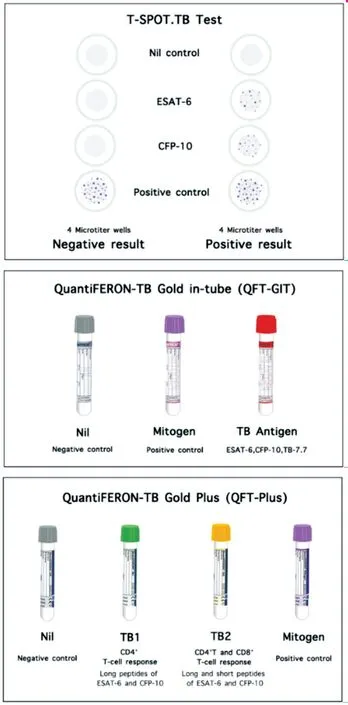
The quality of evidence supporting the use of both IGRAs and the TST for diagnosing active TB infection is low. IGRAs are insufficiently accurate diagnostic tests for active TB and show limited specificity in distinguishing an active infection from an immune response to LTBI.Considering the lack of a gold-standard diagnostic test for LTBI, sensitivity and specificity of IGRAs are typically estimated using representative reference standards. Sensitivity was assessed in patients with microbial culture-confirmedTB, while specificity was evaluated in low-risk individuals from low-incidence areas without any known history of exposure to the disease. Some studies compared sensitivity and specificity of IGRAs with that of the TST or between generations of the immunoassay itself. Table 3 summarizes the pooled sensitivity and specificity of IGRAs as reported in systematic reviews and Meta-analyses. A systematic review and Meta-analysis reported a high agreement and no significant difference in sensitivity and specificity between QFT-GIT and QFT-Plus. IGRA performance also varies between regions with high and those with low TB incidence,with lower sensitivity observed in the former endemic areas.The new generation of IGRAs is under development to improve test performance. Della Bellacompared test parameters of LIOFeron TB/LTBI test with QFT-Plus in application for diagnosis of active TB and LTBI. While the accuracy of both tests was comparable, LIOFeron TB/LTBI assay was more sensitive than the QFT-Plus for detecting LTBI. However, the former test was unable to distinguish active TB from LTBI.
由于我校是培养北京市中小学生物教师的主要高等学府,为了培养高水平的生物教师,同时也为兄弟院校输送优质的后备大学生,那么推动人体及动物生理学实验的教学改革已经迫在眉睫了.
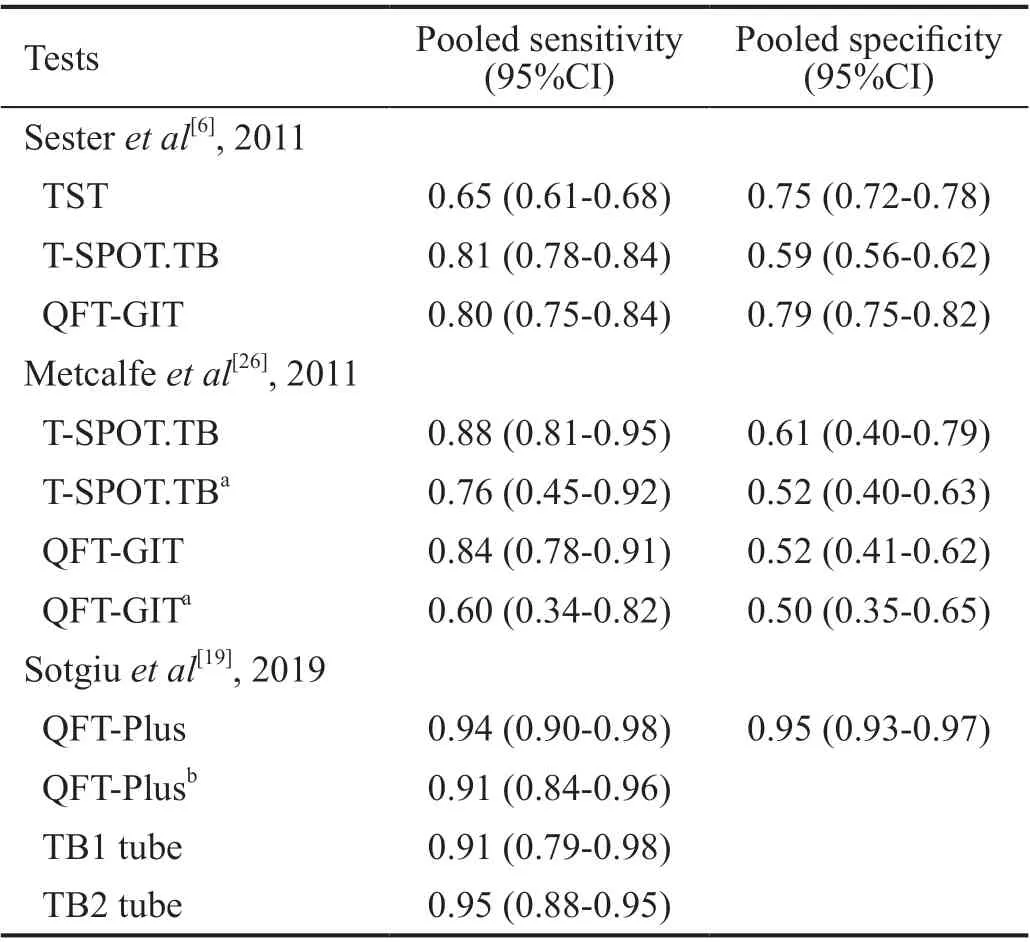
Currently, other products of IGRAs launched in the market include STANDARD E TB-Feron ELISA/STANDARD and F TB-Feron FIA (IFN-gamma; both SD Biosensor), LIOFERON TB/LTBI (LIONEX Diagnostics & Therapeutics GmbH), and Advansure TB IGRA and Avansure i3 TB-IGRA (both LG Chem). Additionally, products of IGRAs that are continuously developing include T-Track(R) TB (Lophius Biosciences GmbH, Germany), VIDAS TB-IGRA (bioMérieux, France),Access QuantiFERON-TB (QIAGEN, USA), ichromaTM IGRA-TB (Boditech Med Inc., Republic of Korea) and IP-10 IGRA elisa/lateral flow (rBioPharm, Germany).
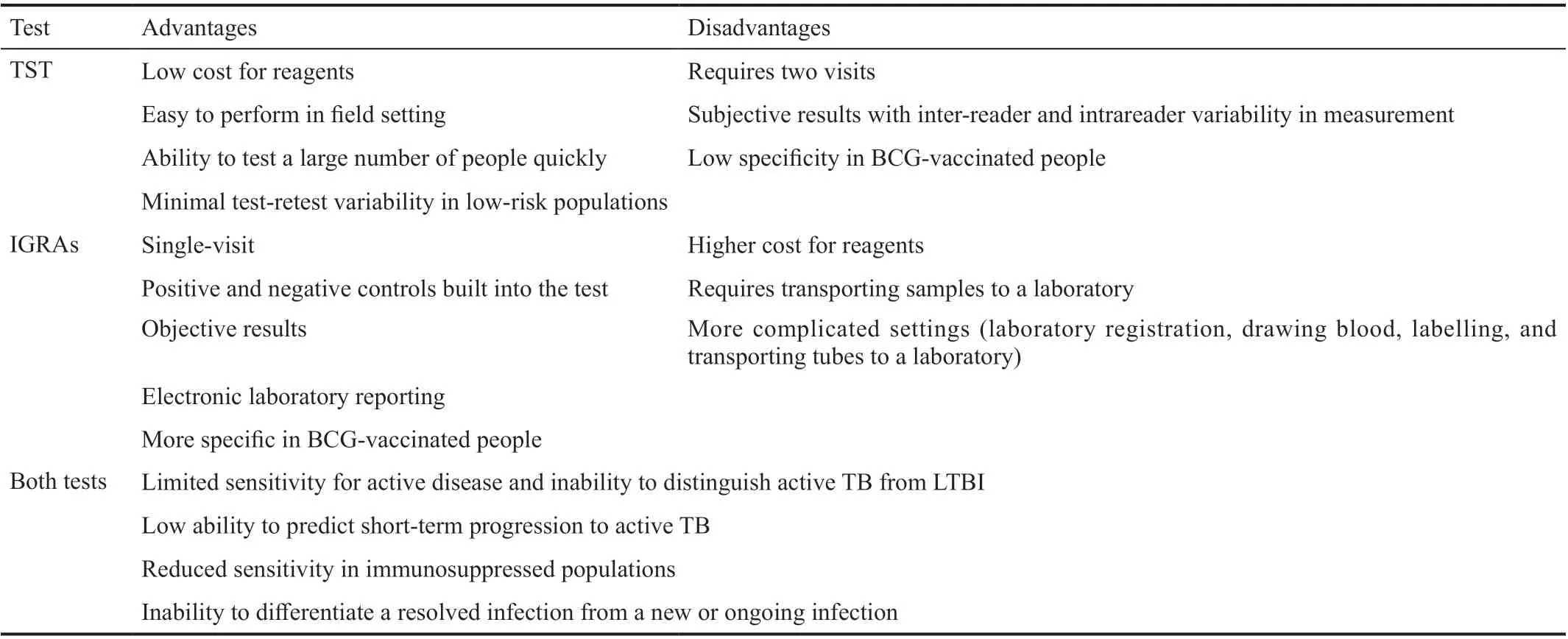
Two studies reported the application of IGRAs in the diagnosis of TBU. A study from Korea evaluated the usefulness of QFT-G in diagnosing presumed TBU in 181 patients. The sensitivity and specificity were reported as 100% and 72%,respectively, with a high positive predictive value in younger patients (≤40y) presenting with posterior uveitis and retinal vasculitis. Another prospective head-to-head study by Angreported that the QFT-GIT test was statistically more accurate in diagnosing true-positive TBU patients than the T-SPOT.TB test (98%76%, respectively). Due to the greater positive predictive value of QFT-GIT compared to that of the T-SPOT.TB test, they suggested application of the former as a first-line diagnostic test rather than the latter or a TST.
Features of IGRAs and the TST are compared in Table 4. The most important advantage of the former test over the latter is the elimination of false-positive results associated with prior BCG vaccination or with previous exposure to environmental mycobacteria. The time-frame of a patient’s exposure to the BCG vaccine may impact the TST result. If the patient had only been inoculated at birth or during the infantile period without having received subsequent booster shots, the impact on TST specificity was minimal.False-positive TST interpretation usually decreases over time, although, it can persist in some individuals and reduce diagnostic accuracy of the test for LTBI.TST also has limitations in its sensitivity. Approximately 75%-90% of patients with active TB show a positive TST. TST performed in patients with immunosuppressive conditions, including HIV infection and disseminated TB, is associated with a high rate of false-negative results (>50%)and, therefore, requires careful interpretation. In such patients,especially in the immunocompromised and in the pediatric agegroup, IGRAs demonstrate higher sensitivity than the TST. In addition, IGRAs become more valuable because of the higher pretest probability for identification of TBU, particularly in uveitis patients from endemic areas.
Furthermore, the technique of IGRAs is more convenient for patients than that of the TST, as it requires only a single visit for blood sampling. Unlike TST, IGRAs are performedand can be repeated without risk of sensitization or a boosting effect. These characteristics make IGRAs practical tests for application in TB screening programs, particularly those conducted in an occupational setting.
A systematic review reported high variation in reversion rates of IGRAs in either active or latent TB among studies, which makes these tests unreliable for monitoring response to antituberculous therapy (ATT). However, an advantage of QFT-Plus in monitoring the response to ATT was recently reported. A decrease in IFN-γ response following QFTPlus-TB2 stimulation was observed after subjects with active TB had received ATT. However, the study was conducted in a region with low endemicity. Further studies are indicated to confirm the utility of QFT-Plus in monitoring treatment response.Similar to the TST, IGRAs perform an indirect assessment of immune response to. False-negative and indeterminate IGRA results have been reported in infants and young children<5 years of age, advance age, early infection phase (<6-8wk),low peripheral lymphocyte counts, in individuals with a recent history of viral vaccination, in immunosuppressed patients(, HIV infection with ≤200 cells/μL CD4 T-cell count,disseminated TB), in those with recent viral and bacterial infections, and in those on immunosuppressant therapy (,high-dose corticosteroids, TNF inhibitors). In addition,IGRAs demonstrate cross-reactivity and may give positive results due to presence of some mycobacterial antigens within the RD-1 locus, as mentioned before.
Nevertheless, interpretation of IGRAs is still complicated by the immunologic recall of preexisting hypersensitivity to TB (, a booster BCG vaccine shot), conversions due to new infection, reversions from positive to negative results,lack of consensus on a cut-off value, and inconsistent test reproducibility. Eventually, higher costs and the technically advanced lab facilities required to perform IGRAs become obstacles to their application in some settings. Therefore, the TST still remains a comparably cost-effective and technically easier alternative diagnostic test for TB.
TBU has a wide spectrum of clinical presentations that may vary from anterior uveitis to intermediate uveitis, posterior uveitis,and panuveitis. It may present as unilateral or bilateral,granulomatous or non-granulomatous inflammation involving the eye. The clinical findings of TBU include iris nodules,ciliary body tuberculoma, organizing exudates in the pars plana/peripheral uvea, choroidal tubercle/tuberculoma,subretinal abscess, serpiginoid choroiditis, retinitis, retinal vasculitis, neuroretinitis, optic neuropathy, endophthalmitis,and panophthalmitis.
Several studies have provided evidence for the use of IGRAs in TBU. Most studies that were performed using the previous generation of IGRAs showed supportive evidence for TBU diagnosis. Groen-Hakandescribed the QFT-G test as a helpful diagnostic tool for uveitis patients in non-endemic countries. They suggested that a positive IGRA result in uveitis of unexplained cause may indicate a possible benefit of initiating ATT, particularly in affected patients with severe and sight-threatening inflammation. Pathanapitoonfound that most patients with positive QFT-G tests experienced uveitis of unknown etiology and occlusive retinal vasculitis.A more significant percentage of positive IGRA results was reported in patients with posterior uveitis. Using QFT-G,Gineysconsidered that the standard laboratory cutoff value of ≥0.35 IU/mL may lead to over-treatment. They proposed that a cut-off value of 2.00 IU/mL was recommended for the diagnosis of TBU.
Angdemonstrated the usefulness of QFT-GIT. They found that while the sensitivity of QFT-GIT was not superior to that of the TST, the former was slightly more specific than the latter. Similarly, the T-SPOT.TB test was found to be more specific but less sensitive than the TST. They recommended using IGRAs together with the TST during screening for TBU,as the overall diagnostic accuracy increased when both tests were performed together. Additionally, utilizing both TST and IGRAs for patients at presentation was found to be costeffective for the diagnosis of TBU. Nevertheless, negative IGRA and TST results in patients with clinical signs suggestive of TBU should be interpreted cautiously, as these do not exclude a diagnosis of the disease.
这位号称娱乐圈大姐大的王京花,在为范冰冰接的众多戏中,就包括冯小刚执导的贺岁电影《手机》。范冰冰也因为饰演女主角武月,获得第27届大众电影百花奖最佳女主角奖。
较为理想的酒用乳酸菌,在苹-乳发酵的过程中需具备较强的苹果酸降解能力,同时还不能分解果实中的酒石酸,且不产或少产乙酸。如果酒石酸大量分解,会导致葡萄酒的腐败。乙酸的产生不仅会影响葡萄酒的口感,而且会改变葡萄酒的性质,影响口感。研究利用模拟酒培养基来模拟刚完成酒精发酵的葡萄初酒,按1%的接种量接种乳酸菌泥,以20℃发酵20 d后,用HPLC方法测定培养液中各有机酸的含量,结果见表4。
The utility of IGRAs was also proposed for the management of TBU in the Collaborative Ocular Tuberculosis Study consensus guidelines. Initiation of ATT is considered based on several supportive factors, including endemic/non-endemic geography,clinical findings suggestive of TBU, immunologic test (IGRAs or TST) results, and radiographic evidence of healed or active pulmonary TB.
To our knowledge, several studies have been conducted on the usefulness of monitoring the response to ATT in active or latent TB; however, the exact role of IGRAs in monitoring treatment response in TBU remains undefined. Additionally,no study has reported the accuracy and clinical application of QFT-Plus in TBU. The evidence of using new generations of IGRAs in TBU is still lacking.
CONCLUSION
TBU comprises a broad spectrum of clinical presentations, and its diagnosis remains challenging. IGRAs are considered useful immunodiagnostic tests that may supplement TST findings to enable diagnosis of TBU in affected patients. Understanding the principles and careful interpretation of IGRAs is helpful for ophthalmologists in clinical settings. However, studies on the new versions of IGRAs in TBU are still lacking, and further studies are needed to determine the role of IGRAs in monitoring the response to ATT in TBU.
None;None;None;None;None.
猜你喜欢
杂志排行
International Journal of Ophthalmology的其它文章
- What can we learn from negative results in clinical trials for proliferative vitreoretinopathy?
- Suggestions on gut-eye cross-talk: about the chalazion
- A novel mutation of RPGR in a Chinese family with X-linked retinitis pigmentosa
- Novel technique of penetrating keratoplasty in high-risk grafts with significant corneal neovascularization
- COVlD-19 infection with keratitis as the first clinical manifestation
- Corneal histomorphology and electron microscopic observation of R124L mutated corneal dystrophy in a relapsed pedigree
